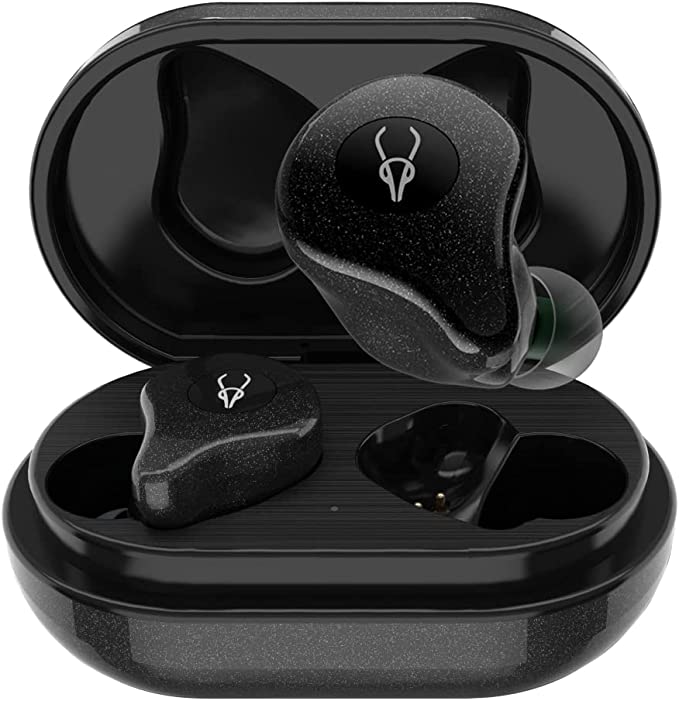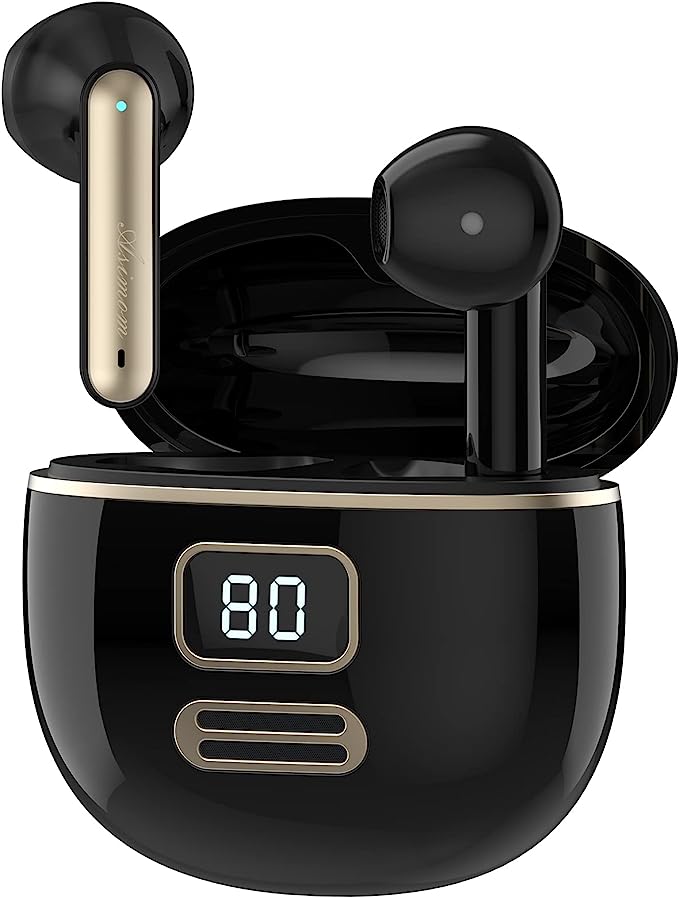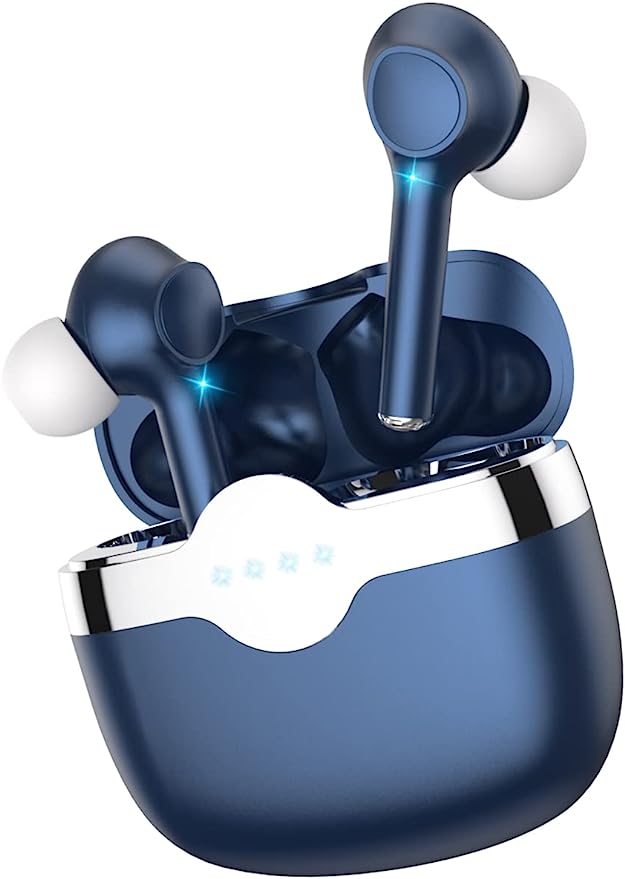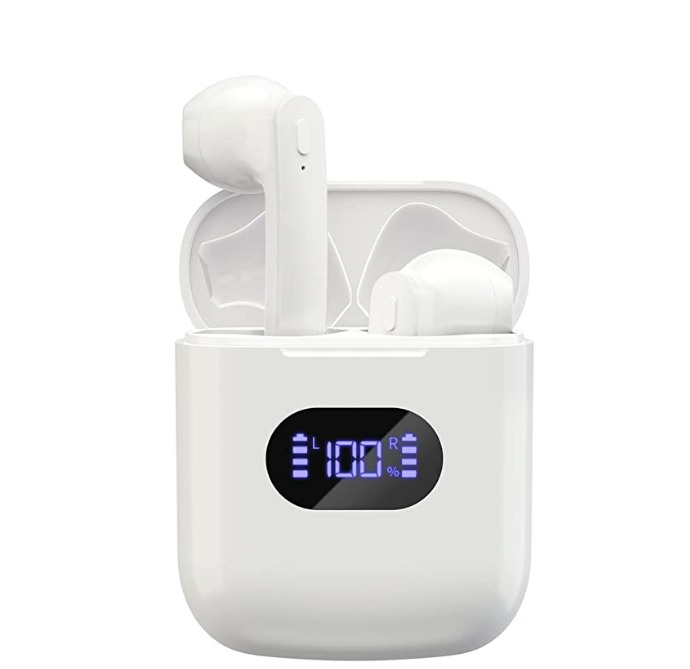ESSONIO QE200 Neckband Bluetooth Headphones: Lightweight and Long Battery Life
Update on June 26, 2025, 5:51 a.m.
In our always-on, mobile-first world, wireless headphones have become less a luxury and more an essential extension of our digital lives. We slip them on for the morning commute, rely on them for crucial calls, immerse ourselves in podcasts during a workout, or simply unwind with music. Among the diverse styles, the neckband headphone, exemplified by devices like the ESSONIO QE200 Neckband Wireless Headphones, carves out a compelling niche. But beyond the convenience, there’s a fascinating interplay of science and engineering working quietly to deliver comfort, clarity, and endurance. Let’s peel back the layers and explore the technology that aims to make your auditory day seamless.

The Invisible Comfort: More Than Just Lightness
Ever found yourself constantly readjusting earbuds after an hour, feeling that tell-tale ache? The neckband design tackles this head-on, and it’s rooted in basic biomechanics. Instead of concentrating all the hardware—battery, chips, antennas—directly in your ears, the neckband intelligently shifts this load. The ESSONIO QE200, for instance, is described as weighing only 40 grams in one section of its product details, roughly the weight of a few standard AA batteries. By distributing this minimal mass across your collarbone and the back of your neck, it significantly reduces the perceived weight and pressure on the delicate ear structures. This ergonomic principle is key to enabling comfortable, all-day wear, transforming headphones from an occasional accessory to a constant, unobtrusive companion.
The choice of materials is equally crucial in this comfort equation. It’s often a duet of properties. For the structural elements, a material like ABS (Acrylonitrile Butadiene Styrene) is a common choice. You encounter ABS plastic constantly; it’s valued for its toughness, rigidity, and impact resistance, all while being relatively lightweight and easily moldable into complex shapes. This provides the necessary backbone. Then, for the parts that make contact with your skin, especially around the neck, something like liquid silicone comes into play. Liquid Silicone Rubber (LSR) is renowned in medical and consumer applications for its softness, flexibility, and excellent biocompatibility—meaning it’s less likely to irritate the skin even with prolonged contact and exposure to sweat. This combination allows the neckband to rest gently, conforming to your movements without chafing or creating pressure points.

Your Personal Sound Bubble: Decoding Audio Clarity and Immersion
When a product like the ESSONIO QE200 mentions “9D shock sound quality” or “cinema sound effect,” what are we really talking about? While “9D” isn’t a standardized technical term in acoustics, it gestures towards an attempt to create a more immersive and spatially aware listening experience. Traditional stereo sound gives you left and right channels. Immersive audio technologies, often powered by sophisticated Digital Signal Processing (DSP), try to add a sense of depth, height, and dimensionality to the sound. This taps into psychoacoustics—the study of how our brain perceives and interprets sound. Our brains use subtle cues like timing differences, reverberation, and frequency changes to locate sounds in three-dimensional space. Advanced audio processing tries to replicate or enhance these cues, making music feel more enveloping or movie audio more lifelike.
Clarity in communication is another battleground. The promise of an “HD Microphone” and “intelligent noise reduction” on these Noise Reduction Headphones is about ensuring your voice cuts through the din of daily life during calls. This isn’t just about making the microphone more sensitive; it’s about making it smarter. The technology typically involves algorithms that analyze the sound spectrum picked up by the microphone. These algorithms are trained to differentiate the characteristic frequencies and patterns of human speech from common environmental noises—traffic rumble, office chatter, wind whoosh. Once identified, the unwanted noise can be actively suppressed or filtered out, leaving your voice clearer and more intelligible to the person on the other end, aiming for that “face-to-face communication” quality even when you’re navigating a bustling street. The quality of this relies heavily on the microphone’s pickup pattern and the sophistication of the noise-filtering algorithms.

Powering Your Freedom: The Marathon, Not Just a Sprint
The Achilles’ heel of any wireless device is its battery. The freedom from cords is only as good as the power source that sustains it. Modern portable electronics, including the ESSONIO QE200 Neckband Wireless Headphones, overwhelmingly rely on Lithium-ion (Li-ion) or Lithium-polymer (Li-poly) batteries. These chemical powerhouses are favored for their high energy density—meaning they can store a lot of energy in a relatively small and light package.
The specifications for the ESSONIO QE200—up to 16 hours of continuous battery life from a 1.5-hour charge, and up to 10 days of standby time—paint a picture of endurance. Sixteen hours is enough to cover a long-haul flight, a full workday punctuated by calls and music, and an evening workout. A quick 1.5-hour charge means less downtime. And a 10-day standby suggests efficient power management when the device is idle, crucial for those who don’t use their headphones constantly but want them ready when needed. This isn’t just about a bigger battery; it’s also about the efficiency of the components, especially the Bluetooth chipset.
The Unseen Handshake: Bluetooth 5.0 and Seamless Connection
The silent, invisible link between your headphones and your phone or laptop is Bluetooth, and version 5.0, as featured in the ESSONIO QE200, brings tangible improvements. Compared to older iterations, Bluetooth 5.0 offers potentially faster data transmission speeds, significantly lower power consumption (thanks to Bluetooth Low Energy (BLE) protocols integrated within it), and improved range and connection stability. The QE200 product page mentions a stable connection up to 32 feet (around 10 meters). While this is an ideal-conditions figure (walls and other 2.4GHz spectrum interference from Wi-Fi routers or microwave ovens can reduce effective range), it generally allows for more freedom to move around without your audio stuttering or dropping.
One particularly convenient feature highlighted for these Bluetooth Headphones Wireless air Neckband Bluetooth Headphones is the ability to connect to two devices simultaneously. This is typically known as Bluetooth multipoint. Imagine you’re watching a video on your tablet, and your phone rings. With multipoint, the headphones can automatically pause the tablet audio and switch to the phone call. Once the call ends, it can seamlessly revert to your tablet. This removes the fiddly process of manually disconnecting from one device and reconnecting to another, a small but significant boost to daily productivity and convenience. This capability depends on specific Bluetooth profiles like A2DP (Advanced Audio Distribution Profile) and HFP (Hands-Free Profile) being managed effectively by the headphone’s firmware.

Built for the Real World: Shrugging Off Sweat and Splashes
For many, headphones are workout partners. The ESSONIO QE200 boasts an IPX6 “life class waterproof” rating. “IP” stands for Ingress Protection, and it’s a standard (IEC 60529) that defines how well an electrical enclosure resists intrusion from foreign bodies (like dust) and moisture. In “IPX6”: * The “X” means there’s no specific rating given for protection against solid particle (dust) ingress in this particular certification string. * The “6” is the crucial part for water resistance. It signifies that the enclosure is protected against powerful water jets. Specifically, it means the device can withstand water projected from a 12.5mm nozzle from any direction at a flow rate of 100 liters per minute at a pressure of 100 kPa from a distance of 3 meters for at least 3 minutes without harmful effects.
What does this mean in practical terms? An IPX6 rating gives you confidence that the headphones can handle heavy perspiration during an intense gym session, a run in the rain, or accidental splashes. The product description mentions “multiple processes protect the headphones from damage layer by layer,” hinting at sealing techniques, hydrophobic coatings on internal components, or specific enclosure designs that prevent water from reaching sensitive electronics. It’s a key feature for anyone leading an active lifestyle.

The Quiet Engineering: Appreciating Your Everyday Tech
Devices like the ESSONIO QE200 Neckband Wireless Headphones are a testament to how numerous streams of scientific and engineering disciplines converge into a single, user-focused product. From the material science ensuring a comfortable, durable build, and the acoustic engineering aiming for clear and immersive sound, to the electrochemistry powering its long life, the radio frequency engineering enabling stable wireless links, and the mechanical engineering providing environmental protection—it’s a complex symphony. The ultimate goal of such technology is often to become almost invisible, to fade into the background and simply allow you to enjoy your music, communicate clearly, and move through your day with one less thing to worry about. By understanding a little of the science within, we can perhaps appreciate not just the convenience, but the ingenuity that makes these everyday companions possible.



































